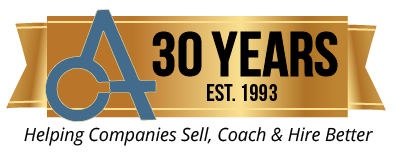Are you following the Ten Commandments of Sales Success? Find out by watching our new series with Chief Growth Officer Mark Trinkle. Today, Mark will discuss Commandment #8: Thou Shalt Always Remember to Add Value.
Watch all of the Commandments Here
Transcript:
Good day everyone. This is Mark Trinkle, Chief Growth Officer with Anthony Cole Training Group. We’re going to continue to march forward in our series, the 10 Commandments for Sales Success. Commandment #8 is Thou Shalt Always Remember to Add Value. Now, remember this right from the get-go. If you don’t add value at the beginning of your sales process or your sales cycle, it’s going to be really hard to defend that at the end. So let’s get that straight. You’ve gotta add it at the beginning to defend it or sell based upon it at the end. Maybe this screen is summarizing some things that you’ve heard recently about price or about rate?
Maybe you’ve heard, “Hey, your rate or your price is too high.” Maybe you heard a prospect say, “Well, you know what, I’ve got better terms from you.” Fill in the blank. Maybe you’ve heard your prospects say, “Hey, I’m gonna look around at some other options.” Maybe they’ve come back to you. Your prospect has come back to you and they said, “Hey, what would it look like if you took your proposal and you did X, Y, or Z?”
Now, look, there are three immutable truths about a prospect and their mentality and their strategy for asking you for a rate or a price reduction. Number one, the first immutable truth. It doesn’t cost him anything to ask, right? I mean, what’s the worst thing that could happen? They might hear no. Number two, your attitude and how you respond to your prospect when they do make that ask is going to set the tone for all future negotiations. And number three, if you don’t move the conversation with your prospect away from rate and towards value, then you are always going to be negotiating on rate or on price.
Now, if you want to be strong at this, if you want to get it right and you want your response to be as effective as it can be for things, you gotta be assertive. You gotta be able to assert your value. You have to know what that value is. You cannot be scared. Number two, you better be really good at asking questions and listening. That was one of the other commandments in this series, by the way. Number three, I alluded to it at the top of this video. You’ve got to be introducing value all throughout the sales process. There must be something unique. You have to stand out from the competition. You better be teaching your prospect not what to think, but how to think. And number four, you had best be really good at negotiating. That’s it for this commandment, Thou Shalt Always Remember to Add Value. Have a great day.



